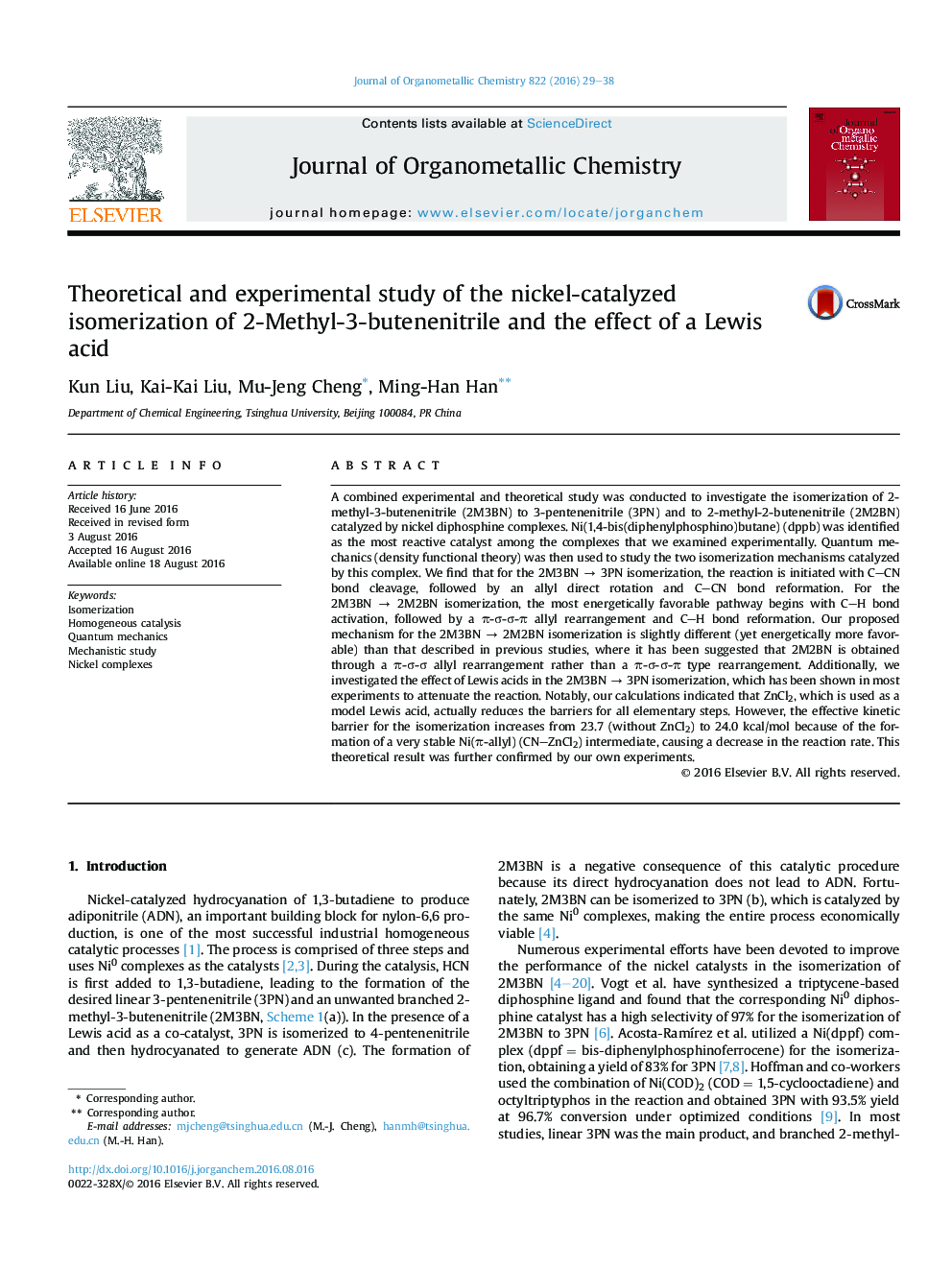| Article ID | Journal | Published Year | Pages | File Type |
|---|---|---|---|---|
| 1322908 | Journal of Organometallic Chemistry | 2016 | 10 Pages |
•A series of diphospine ligands were used in the nickel-catalyzed isomerization of 2M3BN.•The reaction mechanisms for 2M3BN → 3PN and 2M3BN → 2M2BN were revised using DFT methods.•Due to the formation of a very stable Ni(π-allyl) (CNZnCl2) intermediate, the effective kinetic barrier for the 2M3BN → 3PN isomerization increases and therefore reduces the reaction rate.
A combined experimental and theoretical study was conducted to investigate the isomerization of 2-methyl-3-butenenitrile (2M3BN) to 3-pentenenitrile (3PN) and to 2-methyl-2-butenenitrile (2M2BN) catalyzed by nickel diphosphine complexes. Ni(1,4-bis(diphenylphosphino)butane) (dppb) was identified as the most reactive catalyst among the complexes that we examined experimentally. Quantum mechanics (density functional theory) was then used to study the two isomerization mechanisms catalyzed by this complex. We find that for the 2M3BN → 3PN isomerization, the reaction is initiated with CCN bond cleavage, followed by an allyl direct rotation and CCN bond reformation. For the 2M3BN → 2M2BN isomerization, the most energetically favorable pathway begins with CH bond activation, followed by a π-σ-σ-π allyl rearrangement and CH bond reformation. Our proposed mechanism for the 2M3BN → 2M2BN isomerization is slightly different (yet energetically more favorable) than that described in previous studies, where it has been suggested that 2M2BN is obtained through a π-σ-σ allyl rearrangement rather than a π-σ-σ-π type rearrangement. Additionally, we investigated the effect of Lewis acids in the 2M3BN → 3PN isomerization, which has been shown in most experiments to attenuate the reaction. Notably, our calculations indicated that ZnCl2, which is used as a model Lewis acid, actually reduces the barriers for all elementary steps. However, the effective kinetic barrier for the isomerization increases from 23.7 (without ZnCl2) to 24.0 kcal/mol because of the formation of a very stable Ni(π-allyl) (CNZnCl2) intermediate, causing a decrease in the reaction rate. This theoretical result was further confirmed by our own experiments.
Graphical abstractFigure optionsDownload full-size imageDownload as PowerPoint slide
